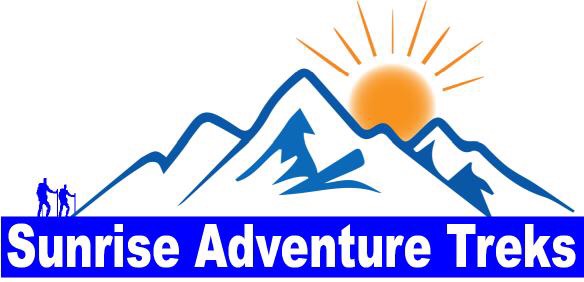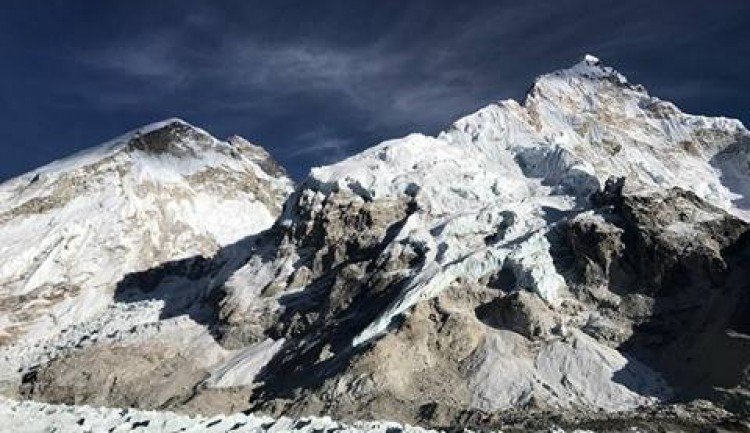At a Glance
8 Days
February to May, September to December.
Moderate to Strenous
Description
Everest Panorama Trek
Everest Panorama Trek, also known as the Mount Everest View Trek, is famous for being an easy and short trek that still offers breathtaking views of the Himalayas. It introduces you to Sherpa villages and their culture, along with stunning views of the world’s highest mountains, including Mount Everest. The trek begins with a mountain flight from Kathmandu to Lukla.
Highlights of the Everest Panorama Trek
- Everest Panorama Trek is a short, popular trek in the Everest region.
- It is a moderate trek in terms of physical fitness and has a lower risk of altitude sickness.
- Explore Sherpa culture and visit Buddhist monasteries.
- The trek offers close views of Mount Everest in a short period.
- Marvel at views of Mount Everest and various neighboring mountains, including ancient monasteries like Tengboche Monastery.
- Experience the flora and fauna of Sagarmatha National Park, including wild habitats like musk deer, spotted deer, red pandas, and wild yaks in beautiful rhododendron forests.
- Explore the famous culture of the Sherpa people and their unique traditions.
Itinerary
The trek begins with an exciting mountain flight from Kathmandu to Lukla. From Lukla, you will walk to Namche Bazaar, the gateway to Mount Everest, where you will experience Sherpa culture and lifestyle. Stunning panoramic views of Mount Everest and other great mountains are visible from Syangboche. The first overnight stay is at this location, following the Dudha Koshi River.
To aid acclimatization, you'll stay an extra day in Namche. On this day, hike to Syangboche for views of Mount Everest (8848 m), Mount Lhotse (8516 m), Mount Ama Dablam, Mount Thamserku, Mount Kwangde, and more. Next, you'll descend to Khumjung village, a typical Sherpa village where you can learn about local lifestyle and visit Khumjung Monastery.
For those with more time, you can opt for an Everest Base Camp trek or an Everest helicopter tour. Explore Kathmandu Valley and its various temples and monasteries before returning to Lukla.
Additional Highlights
While trekking, you'll have the opportunity to visit the famous Tibetan Buddhist monastery in Tengboche. Experience mountain views, meet Buddhist monks, and observe their daily rituals. Tengboche is the final destination of the Everest Panorama Trek before returning to Lukla airport.
For those interested in further exploration, you can visit Kathmandu Valley and its different temples and monasteries. The Everest View Trek is ideal for those with limited time who still wish to experience the magnificence of the Everest region.
Itinerary
Inclusions
All airport pick up and departure
All transportation two flight ticket -fly Kathmandu to Lukla & Fly out from Lukla to Kathmandu ,A/C car, tourist deluxe bus during trips
Three star category hotel in the city in twin sharing bed with breakfast basis & standard trekking lodge during trekking
Kathmandu sightseeing with city tour guide
Whole accommodations during trips
Some necessary equivalents as we can provide
Full board meals during trekking as mention in the itinerary (Breakfast,Lunch, Dinner )
First aid medicine items
Trekking permit & TIMS card (Trekking Information Management System)
Necessary staff, guide & porters their salary, accommodation, meals and their insurance,two professional guide (for two guest one Sherpa porters to carry baggage )
One especial cultural show and farewell dinner program
Our government tax official expenses
Exclusions
All your personal expenses any types of drinks
Tour entrance fee in the city, your extra meals in the Kathmandu, bar bills etc,
Clients international air ticket
Clients travel insurance & tips for the trekking crew
Frequently Asked Question
-
Trekking Group Size
We organize trekking in Everest region for Mount Everest view trek any number of people. If the group is bigger, we will split the group or add more guide and assistance guide we arrange as your choice arrange. We will assign trek leader one or more depend on group size., one assistant leader for the group of four pax and porters (one porter between two members ) to carry members luggage. This arrangement ensures that the group can still go ahead as scheduled itinerary despite any member gets sick on the way in the trekking. -
Experience and Health Requirements
Mount Everest Panorama trekking is moderately trekking in terms of difficult level and physical condition. The trek is suitable for those who can hike for 4 - 6 hours a day. Obviously hiking in the high altitude will not be so easy rather physically more demanding, however our itinerary is scheduled for the proper acclimatization while gradually gaining the altitude in the trekking. It will be advisable to have some physical exercise, walking and hiking or other outdoor activities for more than a week. No technical skills or use of crampons are required for this trekking. It is highly recommended for the trekkers to consult with the doctors before coming for this trekking. Trekkers who have asthma, allergy or any other diseases related to hurt, lungs should take more precaution for this trekking. -
Travel Insurance
Trekkers need to have traveling insurance which covers the comprehensive expenses that might incur due to medical issues or accidents (this includes air ambulance, helicopter rescue, and medical treatment costs). Insurance companies in Nepal do not provide travelling insurance for the foreigners and the trekkers need to get the travelling insurance from one of the international insurance companies. Sunrise Adventure Trek will have accident insurance for the trekking staff. -
Accommodations
Accommodation in Kathmandu will be arranged on twin sharing basis on BB plan except the extra cost for the single supplement (depending on the room availability ) according to the choice of the standard of the hotels before and after the trekking. Accommodation during the trekking will be arranged at standard tea-houses/ lodges with unheated rooms with wooden beds and foam mattresses on twin sharing basis. The trekkers will have to share washing and toilet facilities. Somewhere in high season If the trekker is a solo traveler, he/she will have to share a room with the trekker of same sex. -
Meals
Trekkers are provided three meals a day (breakfast, lunch and dinner) during Everest Panorama trekking. They can enjoy wide variety of food from typical Nepali food, Sherpa food, Tibetan food to all types of international cuisine (Continental, Italian, and Indian.). Unlike other trekking companies, Sunrise Adventure Trek allows trekkers to choose the food from the menu at the hotel / lodges in the trek. When the group is too big for the hotels/ lodges to provide individual dishes, set menu will be arranged in most places. We use the lodges / hotels which serve hygienic, nutritious and good food for the trekkers for them to get enough energy for the hiking. -
Acclimatization
Any trekker can get altitude sickness while trekking in the high altitude despite strong physically fitness. What is important is giving enough time for the proper acclimatization for the trekking. Sunrise Adventure Trek has planned the itinerary with gradual altitude gain giving enough time for acclimatization for the trekkers. Hiking slowly specially in the high altitude help prevent AMS ( Acute Mountain Sickness ). If anyone feels dizzy, suffer palpitation or severe headaches and loss of appetite, he / she will be moved to the lower altitude immediately or arrange the helicopter rescue in the severe case of AMS and the client or insurance has to pay for it. -
Equipment and Packing List
A variety of clothing is necessary for the Everest Panorama Trek. While choosing the equipment trekkers need give emphasis on two simple aspects: Lightweight and Functional. The items should be lightweight, dependable, and adaptable to a variety of extreme weather conditions. The quality of the trekking equipment you choose has a lot to do with how warm, dry, and safe you will remain. For this reason you have to be critical of quality and the proper fit of clothing. -
Clothing and personal
- T – shirts - Hiking shorts - Undergarments - Full sleeves shirts - Long light weight cotton pants - Fleece or wool pants (seasonal) - Waterproof (preferably breathable fabric) shell pants. - Insulated pants / nylon windbreaker - Light and expedition weight thermal tops. - Fleece jacket or pullover - Waterproof shell jacket - Down jacket - Light warm fleece hat / woolen hat - Sun hat - Lightweight gloves. - Heavyweight gloves or mittens with a waterproof shell outer (seasonal). -
Foot Wear
- Hiking boots - Light and comfortable camp shoes - Thin, lightweight inner socks. - Thick, warm wool hiking socks -
Accessories
- Down Sleeping bag - Trekking bag / Duffle bag ( to carry for the porter ) - Day pack ( to carry with the trekkers to put the things required during the day time ) - Large plastic bags ( to keep items dry inside the trekking bag ) - Water bottle - Head lamp with spare bulb and batteries - Trekking poles - Personal medicine box - Sunglasses with UV protection. - Books, dairy, pen, walkman and any other game instruments -
Toiletries and Personal Hygiene
- Quick drying small towel - Toothbrush / paste - Soap - Face and body moisturizer - Sun block for lips - Tissues / toilet rolls - Wet wipes - Feminine hygiene products - Anti bacterial hands wash -
Trek Leader(s) and Staff
All our trek leaders are well experienced who have led trekking in Everest region for the many years. Their in-depth knowledge about culture, custom, the geological surroundings as well as their professionalism, sincerity, and their hospitality make your dream of successful trek a enjoyable, memorable event in your life. Although our trek leaders are not highly educated, they are well experienced, professionally trained and posses good leadership skills to operate the trip smoothly. Their smiling faces, loving and caring attitude will make your even a hard walking day a pleasant one. All trekking staff of Sunrise Adventure Trek are locally employed and have the adequate knowledge about culture, ecosystem, flora, fauna, geography, history and the safety measures in running the trips. Their attitude and the efforts will be always concentrated on the less impact of the trekkers to the local culture, custom, nature and the Eco system. -
Poter care
We are strongly committed to the porters rights. We make sure that they are well paid and have the proper clothing, foot ware and shelter. We are aware that no porter should be asked to carry a load that is too heavy for their physical abilities and the weight limit should be adjusted for altitude, weather and trail condition. We request our members not to have more than 15 kg weight of luggage to give to the porters. Porters who become sick while in the trekking are treated with high priority just like the other trekking staff or the members. If needed helicopter is sent and rescued in case of sever condition of sickness or accident. All porters are insured for sickness and accident. -
Best Season
Nepal, as a tourist destination is good for all seasons, however, the best seasons for Everest panorama / Mount view trek are Spring (March – May) and Autumn (mid Sept. – mid Dec. ). Trekking in autumn season is noted for clear weather and excellent views of silvery mountains against blue sky. It gets colder towards the end of December. This trek can be done in any month except bad weather time.
Related Trips

Kali Gandaki river Rafting in Nepal
$390.00 / Per person
Kali Gandaki river Rafting in Nepal is crystal water river rafting. The Kali Gandaki, west Nepal's Hi...

Kanchenjunga Base Camp Trek
$1,790.00 / Per person
Marvelous views of stunning Mt. Kanchenjunga 8,586 m (28,169 ft). And also provides you a great oppor...

Ganesh Himal and Ruby Valley Trek
$1,240.00 / Per person
Ganesh Himal and ruby valley trek is one of the best treks to observe the hidden beauties of central ...


.jpg)
.jpg)
.jpg)



